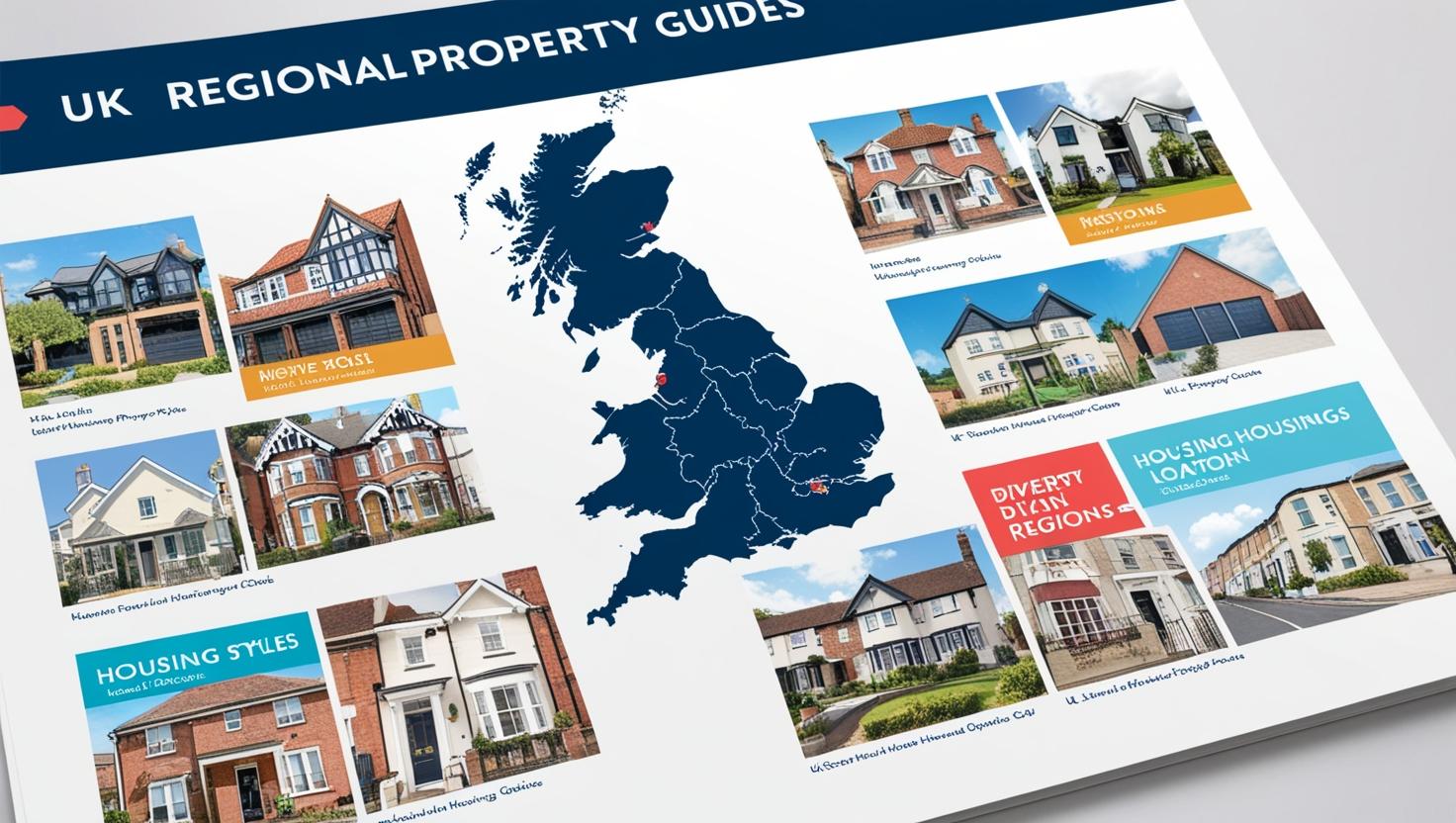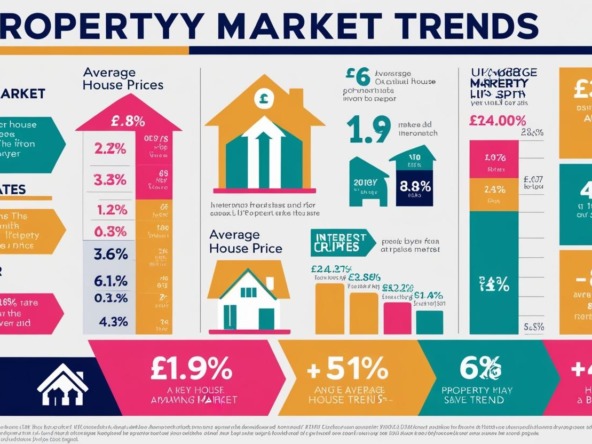Introduction
Finding the right location is perhaps the most crucial decision when purchasing property in the UK. Each region offers a unique combination of property prices, growth potential, lifestyle benefits, and investment opportunities. Whether you’re a first-time buyer, a growing family looking to relocate, or an investor seeking the next emerging market, understanding regional differences is essential for making informed decisions.
This comprehensive guide explores the key UK regions, highlighting their distinct property markets, ongoing developments, and future prospects as of 2025. We’ll examine price trends, buyer demographics, regeneration initiatives, and practical considerations for each area to help you identify the locations that best match your requirements and budget.
London and the South East
London: Borough by Borough
Despite predictions of its decline, London remains a resilient and diverse property market in 2025. However, the capital’s property landscape has evolved significantly, with distinct trends across different boroughs:
Prime Central London
- Following years of price adjustments, prime central areas like Kensington, Chelsea, and Westminster have stabilised with renewed interest from international buyers
- Average prices remain among the UK’s highest, starting at around £1,000,000 for a one-bedroom apartment
- The luxury market above £5 million has seen selective growth, particularly for properties with outdoor space and home working facilities
Outer London Hotspots
- Boroughs with strong transport links and regeneration projects continue to outperform, with areas like Barking and Dagenham, Waltham Forest, and Bexley showing above-average growth
- The Elizabeth Line effect continues to benefit locations along its route, with improved connectivity driving price appreciation
- Family homes with gardens command particular premiums following the pandemic-driven reassessment of living requirements
The Commuter Belt
The surrounding counties of the South East maintain their appeal for those seeking a balance between London accessibility and improved living space:
Surrey, Berkshire, and Buckinghamshire
- Traditional commuter favourites offering established communities and excellent schools
- Premium pricing reflects the quality of life, with significant price increases for properties with home working space
- High-speed internet connectivity has become a crucial factor influencing property values
Kent and Essex
- More affordable alternatives with improved transport links to the capital
- Regeneration in towns like Ashford, Medway, and Basildon has enhanced their appeal
- Coastal areas such as Margate and Southend have benefited from the increase in remote working, attracting London professionals seeking lifestyle changes
The Midlands Engine
West Midlands
Birmingham and its surrounding areas continue their transformative journey, with several factors driving the property market:
Birmingham City Centre
- The ongoing benefits of HS2 development continue to attract investment despite timeline adjustments
- The Commonwealth Games legacy has enhanced the city’s profile and infrastructure
- City centre apartment developments attract both young professionals and investors, with rental yields typically exceeding London equivalents
Wider West Midlands
- Areas like Solihull maintain their premium status with excellent schools and transport links
- The Black Country towns of Wolverhampton and Walsall offer more affordable options with improving amenities
- Coventry’s university presence drives a strong rental market, particularly for purpose-built student accommodation
East Midlands
Often overlooked in favour of its western neighbour, the East Midlands offers compelling value with strong fundamentals:
Nottingham and Leicester
- University cities with diverse economies and strong employment prospects
- Significant regeneration programmes have transformed city centres
- Period properties in areas like The Park (Nottingham) and Stoneygate (Leicester) command premium prices
Northamptonshire and Lincolnshire
- Market towns offering character properties and rural living with good connectivity
- Increasing interest from London re-locators seeking value and lifestyle improvements
- New build developments around major transport routes provide modern living options
The Northern Powerhouse
Manchester and Liverpool
These North West cities continue to lead the Northern Powerhouse initiative with dynamic property markets:
Manchester
- City centre developments continue to transform the skyline, with premium schemes commanding London-comparable prices
- Surrounding areas like Salford Quays, Ancoats, and Castlefield offer vibrant urban living
- The Greater Manchester region provides varied options, with areas like Altrincham and Didsbury maintaining their premium status
Liverpool
- The city centre regeneration continues with the Liverpool Waters scheme progressing
- The Baltic Triangle and Knowledge Quarter attract young professionals and creative industries
- Strong rental yields make Liverpool particularly attractive to investors, with returns of 6-8% achievable in the right locations
Yorkshire and the North East
These regions offer some of the UK’s most attractive value propositions:
Leeds and Sheffield
- Leeds continues to strengthen its position as the North’s financial centre
- Sheffield’s advanced manufacturing innovation district drives economic growth
- Both cities offer city centre living at a fraction of southern prices, with strong rental demand
Newcastle and the North East
- Newcastle’s Quayside and Gateshead developments have transformed the urban landscape
- Surrounding areas like Durham offer historic character and excellent education options
- Coastal towns in Northumberland provide remarkable value and quality of life
Scotland
Edinburgh and Glasgow
Scotland’s two largest cities offer contrasting property markets:
Edinburgh
- The capital maintains its premium status with prices in desirable areas like New Town and Morningside continuing to rise
- The city’s strong financial services sector underpins a robust economy
- Short-term rental regulations have impacted the investor market, with implications for property availability
Glasgow
- More affordable than Edinburgh but experiencing strong growth in areas like the West End and Finnieston
- The city’s cultural renaissance and university presence drive demand
- Significant regeneration projects enhance previously overlooked neighbourhoods
Scottish Highlands and Islands
Remote working has transformed the prospects for Scotland’s most scenic regions:
- Areas around Inverness benefit from improved connectivity and lifestyle appeal
- Island properties on Skye and the Inner Hebrides see unprecedented demand
- Holiday let potential provides additional income opportunities for owners
Wales
Cardiff and Swansea
The Welsh cities offer distinctive property markets with growing appeal:
Cardiff
- The capital’s Bay development continues to mature into a prestigious address
- Suburbs like Pontcanna and Lisvane maintain their premium status
- The removal of the Severn Bridge tolls has strengthened connections with Bristol and the South West
Swansea
- The city’s university drives rental demand in specific neighbourhoods
- The bay area regeneration enhances the city’s appeal
- Surrounding coastal areas of the Gower Peninsula offer premium lifestyle options
Rural Wales
The Welsh countryside provides exceptional value with stunning natural beauty:
- Mid-Wales market towns offer character properties at affordable prices
- North Wales coastal areas benefit from improved infrastructure and tourism
- Remote working has opened previously impractical locations to permanent residence
Emerging Hotspots and Regeneration Areas
Coastal Revivals
The pandemic-driven reassessment of living priorities continues to benefit coastal locations:
- Traditional seaside towns like Hastings, Margate, and Scarborough attract creative communities
- Improved digital infrastructure makes remote working viable in previously seasonal economies
- Investment in cultural facilities enhances year-round appeal
Post-Industrial Renaissance
Former industrial cities continue their remarkable transformations:
- Hull builds on its City of Culture legacy with continued regeneration
- Sunderland’s riverside development creates new urban living opportunities
- Stoke-on-Trent’s ceramics heritage drives cultural regeneration
Practical Considerations When Choosing a Location
Transport Connectivity
Transport links remain fundamental to property values and lifestyle quality:
- Proximity to major transport hubs typically commands a 10-15% premium
- Future infrastructure projects can identify areas with growth potential
- The balance between connectivity and tranquillity varies by buyer preference
Schools and Education
Education options heavily influence family buying decisions:
- Properties in catchment areas for outstanding schools command significant premiums
- University cities offer stable rental markets and cultural amenities
- Educational performance varies significantly between local authorities
Employment Prospects
Local economic conditions underpin sustainable property markets:
- Areas with diverse employment bases show greater resilience to economic shocks
- Knowledge economy hubs attract high-earning professionals
- Public sector employment provides stability in certain regional markets
Lifestyle and Amenities
Quality of life factors increasingly drive location decisions:
- Access to green spaces has grown in importance post-pandemic
- Cultural facilities enhance location appeal beyond basic amenities
- Community factors vary significantly between urban and rural settings
Investment Perspective on Regional Markets
Rental Yield Variations
Understanding regional yield differences is crucial for investors:
- Northern cities typically offer higher rental yields (6-8%) compared to southern locations (3-5%)
- University towns provide reliable student rental demand
- City centre apartments versus suburban houses attract different tenant demographics
Capital Growth Prospects
Long-term value appreciation varies significantly by region:
- Infrastructure improvements often precede substantial price growth
- Regeneration zones offer potential for above-average appreciation
- Established premium areas typically provide more stable but lower growth
Risk Assessment by Region
Different locations present varying risk profiles:
- Economic diversity reduces exposure to sector-specific downturns
- Population growth trends indicate long-term demand fundamentals
- Local planning policies affect development potential and housing supply
Conclusion
The UK property landscape in 2025 offers remarkable diversity, with each region presenting distinct advantages and considerations. Your ideal location will depend on your personal priorities, whether they relate to investment returns, lifestyle preferences, work requirements, or family needs.
At yourpropertyfinder.uk, we specialise in helping clients navigate these regional variations to find their perfect property match. Our local experts provide insights beyond the obvious statistics, helping you understand community factors, upcoming developments, and practical living considerations for each area.
Whether you’re relocating for work, searching for your forever family home, or building an investment portfolio, our team can provide tailored guidance based on your specific requirements and circumstances.
The choice of location remains the most fundamental property decision you’ll make—one that impacts not just your investment returns but your daily quality of life. With the right information and expert support, you can approach this decision with confidence.
Looking for personalised advice on finding your ideal location? Contact our team for expert guidance tailored to your specific requirements.
Explore our current property listings to start your location search.





